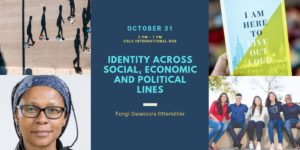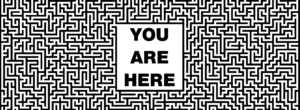On December 2nd, 2020, Diversify held their first Diversity and Inclusion in the Workplace: Talk less, Do More session. This was the first in a series which is designed to pull apart and understand what these terms mean, and to highlight the necessity for action within the various diversity and inclusion initiatives which have appeared recently in the wake of the BLM protests of 2020.
We acknowledge that the newly devised D&I departments, teams and initiatives across various industries are definitely a step in the right direction, and one which is critically overdue. But these labels are not enough. What are the actions that are being taken, and what is the impact?
For this reason, the first session was titled Talk less, Do More. This is a call to turn the ruminations of what a truly diverse and inclusion team would look like into a reality, for diversity not to be tokenistic, but genuine; and for inclusion not to be just an act, but one with intention and meaning. In many cases to know what it means to be included relies on experiencing the opposite- exclusion- at some point in time. And this is what links the two terms. Exclusion is often experienced by the minority groups, those who come from a diverse background, so in order to incorporate inclusion successfully, we must continue to actively educate ourselves and learn from those who have lived the exclusion.
This session was moderated by Hyacinth Walters-Oslen, with speakers Chisom Udeze (Diversify, HerSpace and Mettle consult), Faye Mayrhoo (Business for Peace) and Alison Uttley (Business for Peace). Each of these speakers came from a diverse background: Chisom as Nigerian and third culture kid having lived in the US and four countries in Europe; Alison from Toronto, Canada; and Faye from Trinidad and Tobago. All speakers refereed to their backgrounds and experience moving to Norway as formative in their creating their standpoint and understanding of Diversity and Inclusion.
To begin the discussion, all three speakers were asked: What does diversity and inclusion mean?
Chisom distinguishes between the two; diversity being a science, and inclusion being an art. Among the various types of diversity (race, gender/sex, age, sexual orientation, ability, culture, religion), once you’re aware of these, you can get a range of people in the room. But including them, through providing fair access to resources and opportunities, is more difficult. To achieve this, one has to be creative, making inclusion an art.
Alison elaborated along the same times, referring to diversity from the metrics perspective, where boxes can be ticked, but inclusion is far more active. Faye adds another aspect to inclusivity, commenting that it extends to who is making the decisions and contributing ideas. In other words, having diversity within the lower levels of the organizational structure does not necessarily lead to inclusivity. Only through creating a sense of belonging will an organization reap the benefits of having a diverse team.
The conversation then progressed to the administration of these concepts in relation to the workplace, from the recruitment stages, to organizational culture, structure and communication.
What we discovered is that diversity and inclusion practices cannot just be applied to one area of the workplace. They have to be interwoven, breathed, lived and valued. And to achieve this, the majority culture has to acknowledge bias, both conscious and unconscious.
Take the recruitment process for example, one cannot select from a diverse pool of candidates if they only advertise in forums that reach particular demographics, or if the language of the job advert already states preference of a particular experience, education or background. This is on the road to exclusion as people who do not fit into these molds, despite being very capable for the role, are discouraged from applying. Alison first looks at the candidate pool when recruiting, and if it is not diverse, this signals a problem. Chisom adds that diversifying the hiring process requires active effort from the organizational side. This could mean exploring different sources and networks to try to reach a more diverse range of candidates. Faye also contributes that just increasing the number of people from a minority background in the candidate pool from one to two people, increases the chance of one of them being hired by 192 times. This is called the “Two in the Pool” effect as referenced by Harvard Business Review.
But how can we ensure that the selection process is then unbiased?
We all have bias, some which we are aware of, and some of which we are not. It is the latter which can be the most harmful as unconscious bias influences our decisions and actions through assumptions which are based on what we think we know. In relation to the hiring process, Chisom says that decisions must go past “feeling good” about an individual, as this might be based on unacknowledged preferences. Biased hiring practices can be easily visible in the diversity of the team, and vise versa, the diversity of a company will reflect the level of unconscious bias present. Through evaluating these, one can easily assess the authenticity of claims to diversity.
The questions then moved to organization culture. This is where the benefits of having a diverse and inclusive workplace come into play. All of the speakers reference how promoting diversity and inclusions increases creativity, innovation, motivation and productivity. Chisom, as an economist, also mentions how this in turn increases financial returns leading to growth and increased revenue. Faye also views inclusion in the workplace as a significant stepping stone toward integrating immigrants socially. Adding to this, Alison notes that a diverse workplace is critical in promoting cultural understanding and tolerance, breaking stereotypes and building bridges for a progressive society.
There were over 50 people in attendance at this very interactive panel discussion, representing a diverse range of perspectives – company managers, researchers, those looking for employment and recruiters – all of whom contributed their experiences and reflections. Many were concerned about the discriminant hiring practices which continue within the Norwegian context, particularly in relation to names, background and language capacity. Furthermore, knowing the consequences of an exclusive working environment, some shared their process of looking for employment which includes researching to see whether the team is as diverse as they claim. This only supports the fact that diversity is on the move, and the companies which are not actively incorporating it are missing out on talent.
To conclude, the conversation looked into the ways in which D&I are being progressed within the companies being represented. Each speaker referenced a range of learning opportunities to the teams that analyze organizational culture and communication, and various resources that can assist in this. This must be implemented in a structured and conscious way to reflect the seriousness and necessity of the learning. It must be viewed as an important investment, because D&I is on the rise.
Watch the full panel below.
We look forward to advancing the discussion on diversity and inclusion through these monthly series. We hope you will join us. The next event on this series will address Equity vs. Equality. It will take place on January 24, 2021.
This reflection was written by Nikki Hayes, on behalf of Diversify Team.




